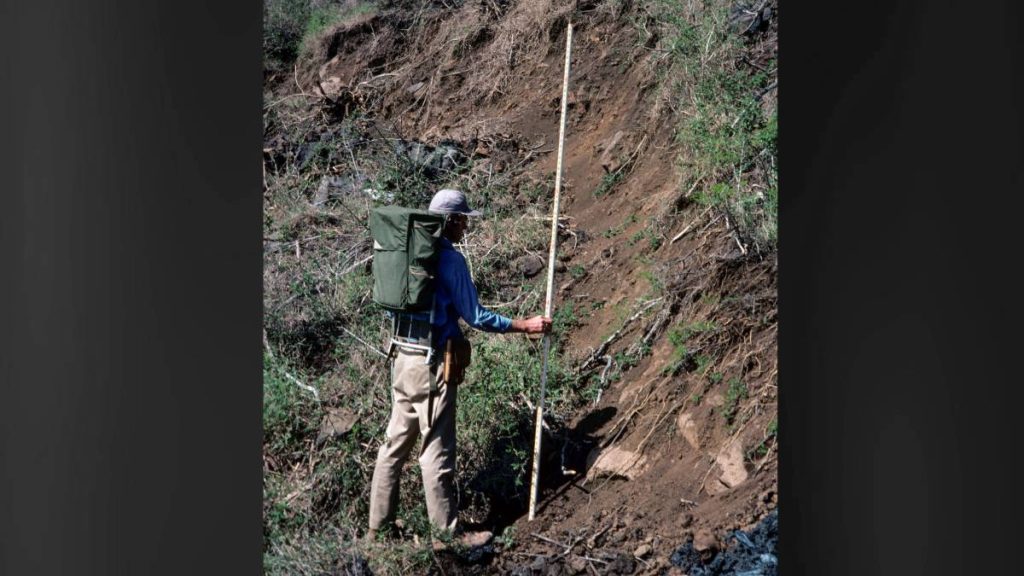Volcano Watch: Distant vs. local earthquakes and tsunami response times in Hawai‘i
“Volcano Watch” is a weekly article and activity update written by U.S. Geological Survey Hawaiian Volcano Observatory scientists and affiliates.
Earthquakes and tsunami in the news during the past few days are a reminder that we live on a dynamic planet with different hazards and associated response times.
While tsunami generated by large, distant earthquakes take hours to traverse the Pacific Ocean, it is important to remember that local earthquakes can also generate tsunami — but with much less warning.
At 1:24 p.m. July 29, a magnitude-8.8 earthquake struck the Kamchatka Peninsula, Russia. A tsunami warning was issued at 2:43 p.m. for Hawai‘i, and the Pacific Tsunami Warning Center issued a forecast for the first waves of a tsunami to arrive at Hawaiian shores a few minutes after 7 p.m.
With hours to prepare for the eventual arrival of tsunami waves, sirens sounded and cellphones received multiple alarms as coastal areas were evacuated.
Tsunami waves began moving through the Hawaiian Islands after 7 p.m., with a maximum measurement of 5.7 feet in Kahului, Maui.
There was ultimately no significant damage in Hawai‘i, and the warning was canceled just before 11 p.m., downgraded to a tsunami advisory that was in effect until about 9 a.m. the next day before the entire “tsunami crisis” passed.
Large distant earthquakes in the past have generated tsunami that caused significant damage and deaths in Hawai‘i.
A magnitude-7.9 Aleutian Islands, Alaska, earthquake in 1946 generated a tsunami that killed 159 people in Hawai‘i, with a maximum wave run-up height of 55 feet measured at Pololū Valley on Hawaiʻi Island.
A magnitude-9.5 earthquake in Chile — the largest earthquake ever recorded — generated a tsunami in 1960 that killed 66 people in Hilo, with a maximum wave run-up height of 35 feet.
Then, 14 years ago in 2011, the magnitude-9.1 Tōhoku, Japan, earthquake generated a tsunami with maximum wave heights of about 12 feet in Hawai‘i. Though there was significant damage, there were no deaths.

Improved earthquake detection and tsunami monitoring, along with streamlined emergency communication techniques — such as the text alarms sent July 29 — reduce the risk of people being injured or killed by tsunami.
Another important factor is response time; tsunami waves generated by distant earthquakes take hours to reach the Hawaiian Islands, giving people time to evacuate vulnerable areas.
Local tsunami, however, do not need to travel far to reach our shores, leaving residents and emergency management agencies a much shorter time to respond.
Large fault slips along the bases of Hawaiian volcanoes have historically produced damaging earthquakes that generated local tsunami, and they will certainly do so again in the future. These events leave residents little time to evacuate to safety.
Researchers at University of Hawai‘i modeled that a tsunami generated from the south flank of the Hawai‘i Island can wrap around and reach Hilo Bay within 4 to 5 minutes after the earthquake, before propagating through the Hawaiian Islands in less than an hour.
An estimated magnitude-7.9 earthquake occurred in 1868 beneath Mauna Loa volcano in Kaʻū, causing landslides and a local tsunami that affected the entire south coast of Hawai‘i Island and killing nearly 100 people.
A magnitude-7.2 earthquake in 1975 beneath the south flank of Kīlauea volcano on Hawai‘i Island generated a tsunami with maximum wave run-up heights of about 47 feet. Two people were killed and many more injured.
Even the magnitude-6.9 earthquake in 2018 beneath Kīlauea generated a small local tsunami with a maximum wave height of 15.7 inches in Hilo.
During these large local earthquakes, the southeast part of Hawaiʻi Island — called the Hilina Slump, with its toe beneath the ocean surface — shifts to the southeast and downward. As this part of the island moves, it displaces ocean water, generating the damaging tsunami that quickly inundate local shores.
If you are near the shore in Hawai‘i, be aware of your surroundings. If you feel strong shaking from a large earthquake, remember that the time you have to respond before a tsunami arrives could be minutes.
Receding water could be a sign of an impending tsunami wave to follow.
Do not wait for sirens or cellphone alarms because the tsunami could occur before there is time for those alerts to be sent.
Immediately head for higher ground, and wait for emergency management agencies to sound the all-clear before returning to the shoreline.
Volcano Activity Updates
KĪLAUEA volcano, Hawai‘i Island
U.S. Geological Survey Volcano Alert Level: Watch
Kīlauea has been erupting episodically since Dec. 23, 2024, within the summit caldera inside Hawai‘i Volcanoes National Park.
Episode 29 of sustained lava fountaining — the most recent of the eruption — in Halemaʻumaʻu Crater occurred on July 20.
Sulfur dioxide emission rates are elevated in the summit region during active eruption episodes. No unusual activity has been noted along Kīlauea’s East Rift Zone or Southwest Rift Zone.
WHAT’S NEXT? Summit region inflation since the end of episode 29, along with persistent tremor, suggests another episode is possible. Current inflation data indicate Episode 30 is likely to start between July 31 and Aug. 3.
Mauna Loa volcano, Hawai‘i Island
U.S. Geological Survey Volcano Alert Level: Normal
Mauna Loa is not erupting.
Hawaiian Volcano Observatory continues to closely monitor Kīlauea and Mauna Loa.
Earthquake report
No earthquakes were reported felt in the Hawaiian Islands during the past week.
Visit the Hawaiian Volcano Observatory website for past “Volcano Watch” articles, Kīlauea and Mauna Loa updates, volcano photos, maps, recent earthquake information, and more. Email questions to askHVO@usgs.gov.



